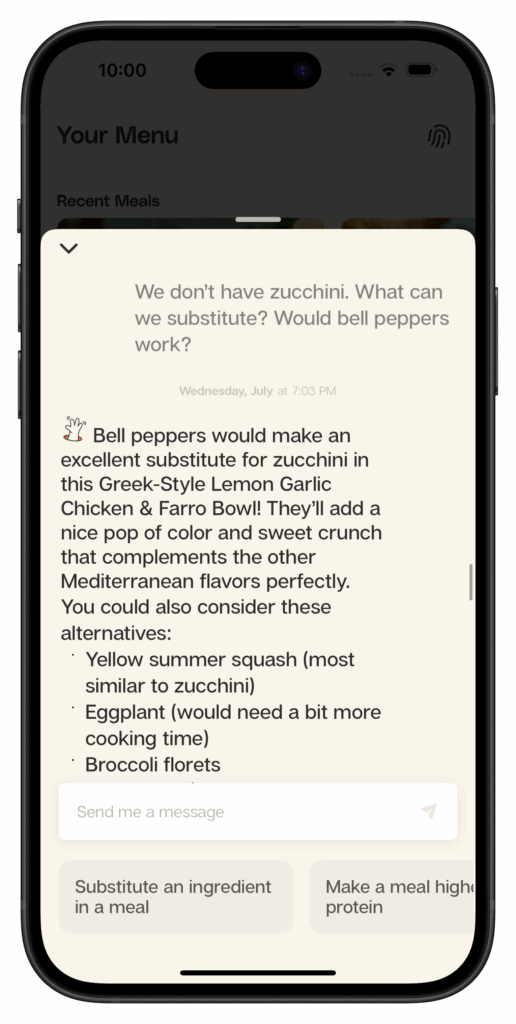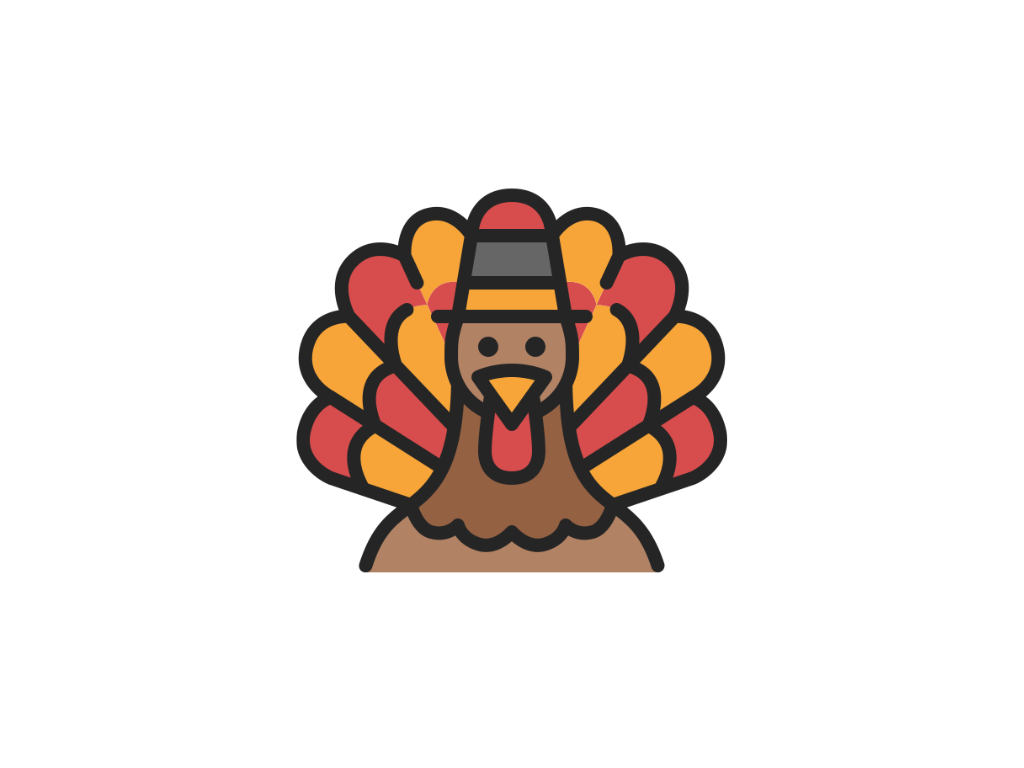Planning Under $100/Week
Many parents wonder: How do I meal plan for a family on a tight budget? The secret is to shift from spontaneous cooking to intentional planning. Families that keep meals simple, repeat ingredients across recipes, and avoid midweek takeout can often feed four people for less than $100 a week.
How do I make a weekly meal plan under $100?
- Build meals around inexpensive proteins like eggs, beans, and chicken thighs.
- Stretch food across multiple meals: a roast chicken on Sunday can become tacos and soup later in the week.
Choose seasonal or frozen produce to save on fresh fruits and vegetables.
How can I cut my grocery bill with meal planning?
Most meal apps stop at suggesting recipes, leaving parents to figure out how everything fits together. Ollie is different. It creates a coordinated weekly plan that reuses ingredients across multiple meals, cutting both costs and waste. The carrots you buy for Monday’s soup don’t sit forgotten in the fridge; they show up again in Thursday’s stir-fry or Saturday’s kid-friendly wraps.
And the savings add up. In a recent survey, 75% of Ollie households reported spending less on food each week. Most saved at least $25 weekly, over $100 a month, and one in four saved $50 or more simply by reducing takeout and preventing wasted groceries.
This ingredient overlap is one of the simplest ways to keep a family’s grocery bill under $100 a week, and Ollie does it automatically. Instead of juggling recipes or scrolling endlessly through an app, you start the week with a ready-made menu and a grocery list that actually works together.
10-Ingredient Systems
Another popular question parents ask is: How do I meal plan with only 10 ingredients a week? Limiting your ingredient list not only saves money but also reduces decision fatigue.
A 10-ingredient system works because the same staples can form dozens of meals. For example:
- Rice and beans become burrito bowls.
- Eggs, cheese, and tortillas make breakfast-for-dinner quesadillas.
- Potatoes pair with leftover veggies for soups or sheet-pan meals.
When your pantry has fewer, more versatile items, you avoid overspending on one-off ingredients.
Ollie makes this style of planning easier. You can set the ingredients you have at home, and its recipe generator creates different meals from the same small pool of items. It’s a way to keep variety without blowing the budget.
Meal Planning with Sales/Flyers
How do I meal plan using only what’s on sale? For decades, families have saved money by flipping through grocery flyers first and planning meals second. Instead of picking recipes and then shopping, you plan around discounted proteins and produce.
- If chicken thighs are on sale, build three meals around them.
- If apples are cheap, use them in both snacks and desserts.
- Seasonal vegetables like zucchini or squash can carry multiple meals for a fraction of the price.
The challenge is flexibility: you need recipes that adapt to substitutions. Ollie handles this by letting you swap ingredients quickly. If broccoli was on your plan but zucchini is half the price, Ollie adjusts recipes instantly so you don’t have to rethink the entire week.

Cheap but Healthy Dinner Ideas Kids Will Eat
Parents often ask: What are cheap but healthy dinner options for families? The goal is meals that are both nutritious and appealing to kids — without requiring specialty ingredients.
Some proven options include:
- Lentil soup with bread (protein-rich and costs just a few dollars per batch).
- Sheet-pan chicken with potatoes and carrots (balanced and kid-friendly).
- Baked potatoes topped with beans and cheese (customizable for picky eaters).
- Vegetable stir-fry with rice (use frozen vegetables to save money).
- Homemade pizza night (affordable, interactive, and a guaranteed kid-pleaser).
The key is repetition with variety: keep a rotation of 10–12 go-to meals that everyone eats, then mix in small variations (different toppings, sauces, or sides) so no one gets bored.
Ollie’s dietary filtering and recipe customization make this smoother by letting you adjust meals to fit your family’s preferences without straying from budget-friendly basics.
Preventing Overspending and Takeout Traps
The final challenge is consistency. Parents ask: How do I stop overspending at the grocery store with meal planning? And how do I meal plan if I’m trying to save money on takeout? The answer comes down to structure.
- Always shop with a list impulse buys are the fastest way to blow your budget.
- Organize lists by store section to avoid backtracking (and grabbing extras you don’t need).
- Anticipate busy nights by planning quick, 20-minute dinners so you’re not tempted to order in.
Ollie automates these steps. Its grocery lists are categorized, which helps parents get in and out of the store quickly without wandering into unplanned purchases. And because Ollie factors in your weekly schedule, it suggests quick dinners on nights when sports practice or late work meetings might otherwise push you toward takeout. If shopping itself is the bottleneck, you can send the list straight to Amazon Fresh or Instacart for delivery.
Conclusion
Budget-friendly meal planning is less about sacrifice and more about strategy. By capping spending at $100 a week, reusing 10 core ingredients, building meals around sales, and planning for busy nights, families can eat well without overspending.
The systems above work, and Ollie automates them, so your family gets the savings, the structure, and the healthy dinners without the stress.
Try Ollie today and take the stress out of family meal planning so your meals can be about connection, not conflict.




